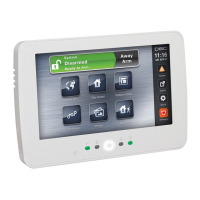Guidelines for Locating Smoke Detectors and CO Detectors
Carbon Monoxide Detectors
Carbon monoxide is colorless, odorless, tasteless, and very toxic. It also moves freely in the air. CO detect-
ors can measure the concentration and sound a loud alarm before a potentially harmful level is reached. The
human body is most vulnerable to the effects of CO gas during sleeping hours; therefore, CO detectors
should be located in or as near as possible to sleeping areas of the home. For maximum protection, a CO
alarm should be located outside primary sleeping areas or on each level of your home. Figure 5 indicates the
suggested locations in the home.
Figure 13-
GROUND
FLOOR
BASEMENT
KITCHEN
GARAGE
BEDROOM
BEDROOM
BEDROOM
CARBON MONOXIDE DETECTOR
Figure 5
Do NOT place the CO alarm in the following areas:
l Where the temperature may drop below -10ºC or exceed 40ºC
l Near paint thinner fumes
l Within 5 feet (1.5m) of open flame appliances such as furnaces, stoves and fireplaces
l In exhaust streams from gas engines, vents, flues or chimneys
l Do not place in close proximity to an automobile exhaust pipe; this will damage the detector
- 33 -

